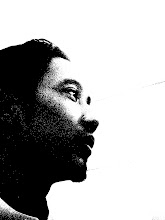
In the first years of the Bauhaus at Weimar, typography did not yet play the central role it was later to take on. For Johannes Itten and Lothar Schreyer, calligraphy was essentially an artistic means of expression. At first, practical fields of application remained seldom and were restricted to small, miscellaneous printed matters.
With the appointment of Moholy-Nagy in 1923, who was to introduce the ideas of "New Typography" to the Bauhaus, the situation radically changed. He considered typescript to be primarily a communications medium, and was concerned with the "clarity of the message in its most emphatic form". His influence is clearly visible already in 1923 in the advertising campaign for the large Bauhaus exhibition of Summer 1923. Moholy-Nagy designed the layout for the exhibition publication and further took over the typography of the "Bauhaus books".
From then on, typography at the Bauhaus was closely connected to corporate identity and to the development of an unmistakable image for the school. Characteristic for the design were clear, unadorned type prints, the articulation and accentuation of pages through distinct symbols or typographic elements highlighted in color, and finally direct information in a combination of text and photography, for which the name "Typofoto" was created.

In addition, the consideration of economic factors led to the usage of normed formats, a partly simplified spelling, and more particularly, the abolition of capitalization.
In Weimar, next to Moholy-Nagy, both Joost Schmidt and Herbert Bayer had also been concerned with typography. In Dessau, Bayer took over the newly installed workshop for printing and advertising and rapidly transformed it into a professional studio for graphic design. He intensively developed Avant-garde typesetting and his posters and printed matters show a concern with contemporary themes from the psychology of advertising.
Following his departure from the Bauhaus in 1928, Bayer continued to work at first in Germany, later in the USA, and became one of the most influential graphic designers of the twentieth century.
Joost Schmidt was his successor at the Bauhaus. He introduced a systematic course for the design of lettering and advertising graphics and expanded it to the practice of exhibition design. Examples of the applicability of experimental forms of presentation in architecture, sculpture, photography, and typography were presented in Bauhaus traveling exhibitions and at conventions in and outside Germany. The stands were designed by the advertising workshop.
Source From :-www.bauhaus.de/english/bauhaus1919/werkstaetten
With the appointment of Moholy-Nagy in 1923, who was to introduce the ideas of "New Typography" to the Bauhaus, the situation radically changed. He considered typescript to be primarily a communications medium, and was concerned with the "clarity of the message in its most emphatic form". His influence is clearly visible already in 1923 in the advertising campaign for the large Bauhaus exhibition of Summer 1923. Moholy-Nagy designed the layout for the exhibition publication and further took over the typography of the "Bauhaus books".
From then on, typography at the Bauhaus was closely connected to corporate identity and to the development of an unmistakable image for the school. Characteristic for the design were clear, unadorned type prints, the articulation and accentuation of pages through distinct symbols or typographic elements highlighted in color, and finally direct information in a combination of text and photography, for which the name "Typofoto" was created.

In addition, the consideration of economic factors led to the usage of normed formats, a partly simplified spelling, and more particularly, the abolition of capitalization.
In Weimar, next to Moholy-Nagy, both Joost Schmidt and Herbert Bayer had also been concerned with typography. In Dessau, Bayer took over the newly installed workshop for printing and advertising and rapidly transformed it into a professional studio for graphic design. He intensively developed Avant-garde typesetting and his posters and printed matters show a concern with contemporary themes from the psychology of advertising.
Following his departure from the Bauhaus in 1928, Bayer continued to work at first in Germany, later in the USA, and became one of the most influential graphic designers of the twentieth century.
Joost Schmidt was his successor at the Bauhaus. He introduced a systematic course for the design of lettering and advertising graphics and expanded it to the practice of exhibition design. Examples of the applicability of experimental forms of presentation in architecture, sculpture, photography, and typography were presented in Bauhaus traveling exhibitions and at conventions in and outside Germany. The stands were designed by the advertising workshop.
Source From :-www.bauhaus.de/english/bauhaus1919/werkstaetten

No comments:
Post a Comment